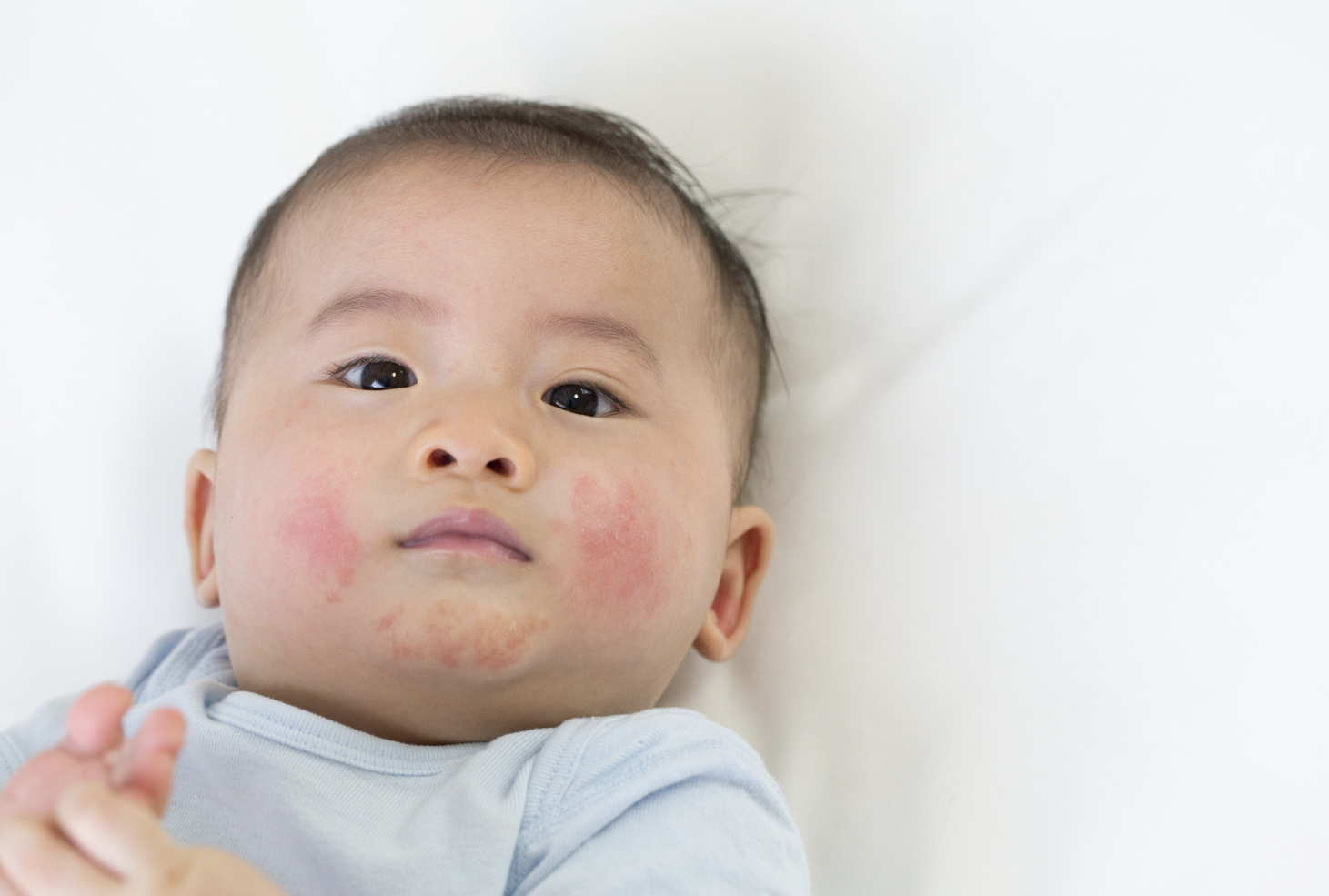Childhood Food Allergies, Intolerances and Sensitivities

What causes food allergies and intolerances in babies and children?
Allergies occur when the immune system has an overreaction to something that would not typically cause harm to the body. The immune system can react to the protein part of any food, pollen, dust, animal hair or mould. If something has a protein component, theoretically, an allergic response could occur if the immune system mistakenly sees it as a threat.
How can I tell if my child has a food intolerance?
Food allergies cause symptoms very soon after eating the tiniest amount because they stimulate an immune reaction. By comparison, the symptoms of food intolerances actually result from a wide range of chemical reactions that occur anywhere from a few hours to a few days after exposure.
Symptoms of food intolerances in children
- Headaches and migraines
- Tummy pains, nausea, vomiting
- Diarrhoea
- Constipation
- Itching, inflamed skin
- Runny nose
Symptoms of food allergies in children
- Anxiety, tremor, sweating
- Palpitations
- Itching, burning and swelling around mouth, eyes and/or throat
- Treatment-resistant eczema
- Hives
- Contact rash/dermatitis
- Breathing difficulties, cough, asthma
Food intolerances or food hypersensitivities are not life-threatening, but the symptoms can be severe and very distressing. Around 1 in 10 infants and 1 in 20 children have food allergies. 60% of these children will start showing symptoms within their first year of life.
Cow’s Milk Protein Intolerance (CMPI)
Cow’s milk protein intolerance (CMPI) is one of the most common sensitivities in infancy. While most children with CMPI grow out of it without any intervention, it can complicate other conditions. Symptoms of skin conditions, asthma, chronic ear infections, congestion, diarrhoea and constipation may be more severe if an intolerance or allergy is left untreated.
Causes of food intolerances and food sensitivities
Children who have a family member with food allergies or other allergic diseases (including asthma, eczema or hayfever) have up to a 30% higher risk of developing an allergy themselves. If they have two or more family members with allergic diseases, the risk may actually increase up to 70%.
It’s theorised that the widespread use of antimicrobial cleaning products and sanitisers used in the family home may have had some undesirable consequences. In an effort to protect children from exposure to disease-causing bugs, we could have denied their immune systems the opportunity to learn how to behave properly. This ‘hygiene hypothesis’ is one possible explanation for the rise of allergies amongst children.
An inability to tell the difference between ‘harmful’ and ‘harmless’ causes a child’s immune system to be triggered by common foods, dust, pollen, chemicals and animal fur. When the immune system overreacts it causes symptoms to appear very suddenly, while the symptoms of an intolerance are typically delayed.
The most common food allergies for children
- Nuts, particularly peanuts
- Dairy (cow, sheep, goat)
- Eggs, particularly egg white
- Wheat
- Soy
The most common food intolerances for children
- Cows milk, and cows milk products
- Egg
- Food additives, preservatives, and flavour enhancers (such as MSG)
- Citrus and other acidic fruits
- High histamine foods
- High salicylate foods
- High amine foods
How to tell the difference between food allergies, food intolerances, and food sensitivities
It can be difficult to tell the difference between a mild to moderate food allergy and a food intolerance, as the symptoms can sometimes be very similar. However, as food intolerances do not involve IgE mediated immune responses, they do not show on allergy testing. Just because a child has been cleared of having an allergy, does not necessarily mean that they’re not intolerant.
When symptoms appear quickly, identifying the cause is pretty straightforward. However, food intolerance reactions are usually delayed and can be related to the amount of food consumed. Symptoms may not occur until a certain amount of the food is eaten, but the amount can vary between children. These factors can make pinpointing the cause quite tricky, especially if there are multiple intolerances.
How to identify food allergies and intolerances in babies and children
- Exposure, diet, and symptom diaries help to keep a record of symptom patterns
- Remove any suspected food or environmental trigger for two weeks, then reintroducing them one at a time
- Reintroduce one new food every 3 days, to monitor for any delayed symptoms
- Food intolerance and/or allergy testing
What is the best treatment for food allergies and intolerances?
The simplest way to treat an allergy or intolerance is to remove it from the diet or environment. After the body has had time to rest and recover, if it is safe to do so, there is the option of beginning the process of reintroduction. Along with tummy and immune support, specific probiotic therapy can help this process of reducing the severity of reactivity. Working to build tolerance is most effective when the cause of the reaction is reintroduced in small amounts, and very gradually increased.
Do food allergies and intolerances get worse with age?
When a child has an intolerance or an allergy, one of the biggest concerns is the possibility of the reactivity worsening. As children grow, sometimes the symptoms can worsen over time. This is especially true of allergies, where more serious reactions can occur with each exposure. With this in mind, it’s important to work towards increasing tolerance where it has been deemed medically safe to do so. This is the goal of an allergy and intolerance reduction protocol.
Can you overcome a food allergy?
Immune, gut, microbiome and digestion support, alongside elimination and gradual reintroduction, can support this process of building tolerance. Alongside providing effective symptom relief we support the underlying body systems, tissues and organs involved in the reactive process. We want to do everything we can to relieve the respiratory, skin and digestive side effects that can result from allergies and intolerances. Specific herbal and nutritional medicine can help to reduce the symptoms of reactivity and address potential underlying causes.





